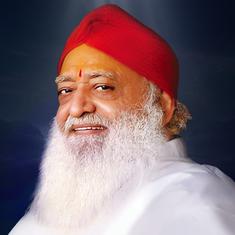2005 Bengaluru shooting case: NIA court discharges accused, cites lack of credible evidence
Mohammad Habeeb was arrested in Agartala, Tripura, in 2017 based on the statement from a co-accused Sabahuddin given to Lucknow police in 2008.

A Special National Investigation Agency court in Bengaluru has discharged auto driver Mohammed Habeeb, an accused in the 2005 shooting at the Indian Institute of Science in the city, Live Law reported on Monday. One person had died and several others injured after gunmen opened fire at the institute on December 28, 2005.
Special Judge Kasanappa Naik said that the prosecution has not made out a prime facie case against Habeeb to frame charges under various sections, including section 121 (waging or attempting to wage war against the government of India), 307 (attempt to murder) of the Indian Penal Code and provisions of the Explosive Substance Act and the Unlawful Activities (Prevention) Act.
The court also cited a lack of credible evidence of Habeeb’s involvement in the case. The judge said that he “failed to understand why he [Habeeb] was arraigned as an accused in the case”.
Habeeb was arrested in Agartala, Tripura, in 2017 based on the statement that co-accused Sabahuddin gave to the Lucknow Police in 2008. Sabahuddin had reportedly claimed that Habeeb helped him cross the border to Bangladesh after the 2005 attack, reported The Hindu.
Advocate Mohammed Tahir, appearing for Habeeb, argued that the police have not stated anything in the chargesheet about the accused and also not collected any evidence to show that Habeeb had any distinct knowledge of the incident or crime involved in the case.
Tahir submitted that Sabahuddin had mentioned various other names in his statement, including those who helped him cross the border and provided necessary help. However, Tahir said, the police have not made them accused or cited them as witnesses.
“The police though filed a lengthy chargesheet, but not produced even a single piece of evidence against this accused to prove the charges against him,” the advocate said. “The accused is languishing in jail without committing any crime nor having any knowledge of the crime and his involvement.”
The special prosecutor in the case, however, argued Habeeb had assisted Sabahuddin cross the border illegally to Bangladesh and then back to India before the incident. The prosecutor claimed that Habeeb had knowledge about the involvement of other accused in the 2005 attack but still helped them escape to Bangladesh.
After going through the case records, the court noted that Sabahuddin, in his 2008 statement, had not spoken about Habeeb’s involvement in the case. It said that the case record show that Habeeb’s name had emerged in 2008 but no action was taken to arrest him.
The judge said that after Habeeb was arrested, there was no material evidence against him. The court observed that there were no records to show that Habeeb had any knowledge about the attack or that Sabahuddin was a Lashkar-e-Taiba member.
“There is no independent evidence available to prove that accused No.7 [Habeeb] assisted accused No.1 [Sabahuddin] to do any criminal and unlawful acts. If at all, the accused No.7 had assisted accused No.1 in crossing the border to go to Bangladesh illegally, it is for the concerned Police at Tripura to prosecute him in this regard and he cannot be prosecuted in this case.”
— Special NIA court
After his release from the city prison, Habeeb told The Hindu that he had never been involved in any terror activities. “Nearly 12 years after the alleged attack, the police suddenly arrested me, calling me me a terrorist,” he said. “My family suffered without a breadwinner for over four years. The court has finally given me justice, but nobody will give me back my time in prison and the trauma my family and I were put through for no fault of ours.”
Tahir said that Habeeb’s arrest was a “complete travesty of justice”. “An innocent person had to spend over four years in jail for no reason. We welcome the court granting relief,” he told The Hindu.









